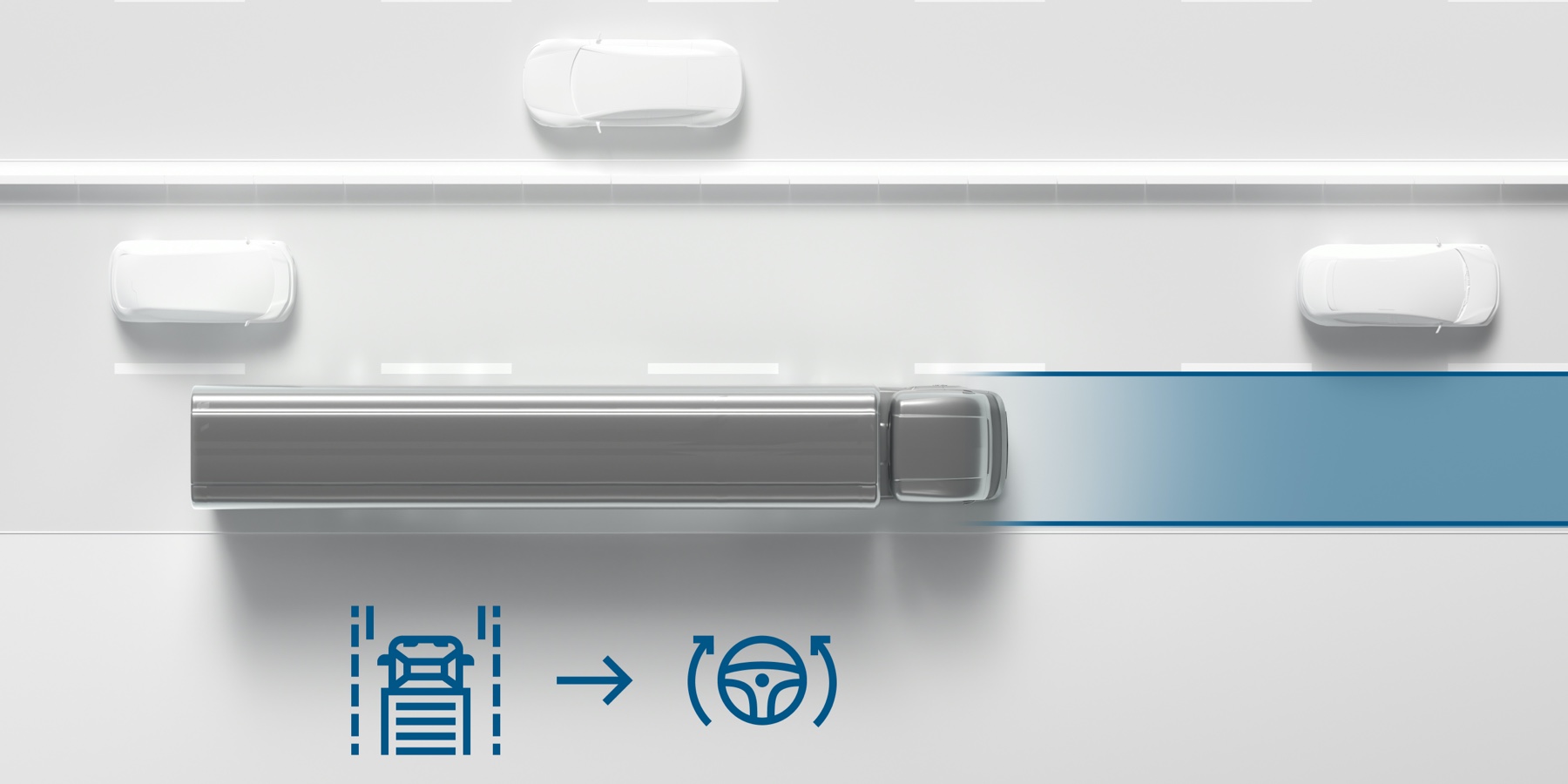Are you interested in our solutions? Then write us a message. Our sales team will be happy to help you.
Start enquiryIn its capacity as the smart car’s brain, the vehicle computer decides on the optimal driving strategy. The powertrain, braking system, and steering implement this safely and reliably in real time. As a result, the driver can simply sit back and relax.
Reliable implementation of the calculated driving strategy (“Act”) is assumed by the powertrain, steering and brakes. They represent the car’s muscles, so to speak, which pass the powertrain, braking or steering forces onto its limbs – the wheels – thereby getting it onto the road. Impulses are provided by electronic lines which – just like nerve pathways in the human body – stimulate action by the individual systems.
Automated driving makes particularly high demands on the safety of components and sub-systems in the vehicle which is why Bosch is already today offering solutions for safety-critical functions with a redundant system design providing maximum protection from possible failures.
Thanks to its surround-sensor system, the vehicle constantly perceives its surroundings, enabling it to sense and avoid dangers in good time.
The vehicle knows the road conditions ahead, such as ice or rain, and can adapt its driving behavior or route in good time.

Thanks to predictive road condition services, the vehicle knows the road conditions and that there is an icy patch ahead, for example. It adapts its driving style to safely cross such obstacles.
The vehicle always knows where it is and is aware of its entire surroundings. This means it can autonomously change lanes and avoid obstacles, for example.
The vehicle detects hazardous situations and, thanks to a high-performance braking system, can quickly and safely come to a stop.
The vehicle must be capable of assuming tasks which are already a challenge for human drivers. It must autonomously decide where it is going, when to accelerate, brake and steer – all on the basis of information which can change at a moment’s notice. The system must therefore consider its entire surroundings when calculating the route and steering the car swiftly, safely and precisely.
Because the vehicle knows the current road conditions, when there is an icy stretch ahead, for example, it can adapt its driving strategy accordingly and reduce speed for safely crossing icy patches. As it constantly perceives and evaluates its own position and its entire 360-degree surroundings, it is also capable of bypassing obstacles or changing lanes as required.
Using artificial intelligence, the automated vehicle has learned the characteristic behavior patterns of various objects. Thanks to interior and surroundings sensors, it can anticipate critical situations and react in good time – for example, by activating the braking system when a pedestrian is about to cross the road ahead.

The lane centering assist from Bosch actively helps the driver to keep the vehicle in the center of its lane. The multipurpose camera is used to detect objects. It detects lane boundaries, such as lane markings or structural boundaries, alongside the vehicle and constantly compares these with the position of the vehicle in the lane.
The system takes over the steering, keeping the vehicle continuously in the lane. The lane centering assist can be activated while driving and, if necessary, can be overridden by the driver at any time. The driver remains responsible for the driving task.
Are you interested in our solutions? Then write us a message. Our sales team will be happy to help you.
Start enquiry
